Update in clinical procedures
Clinical case presentation and discussion
Case 1
The speaker introduced a 47-year-old female patient referred by a colleague. The patient’s main complaints can be seen in figures 1–4. Overall, she was a healthy patient, and presented with periodontal disease and several missing teeth.
The following issues were discussed concerning the case, while the experts shared their opinions:
Placing implants in periodontal patients
Although the audience’s vote was divided, the experts agreed that the periodontal inflammation needed to be controlled before placing implants, as a clinical guideline. Long-term clinical studies have shown that fewer biological complications are associated with periodontal pockets less than 5mm deep following treatment (Pjetursson et al., 2012).
Saving compromised teeth
Decision-making is difficult before performing periodontal treatment. Nevertheless, we should be able to advance the prognosis of problematic teeth before beginning treatment. We should communicate the questionable prognosis to the patient as well as the need for re-evaluation after the initial treatment.
However, the greatest challenge for this patient was to turn her attention from just the missing two missing teeth to the periodontal treatment and oral health of her whole mouth.
At this point, half of the audience voted to save the teeth. The experts unanimously agreed that they would not extract (yet, at least).
Treatment timing
The experts agreed that they would force eruption on tooth 11; some indicated that they would first try to regenerate the periodontal bony defect. The main goal, however, was to force the tissues to move to a more coronal position. The main problem with this approach came from the aesthetic demands of the patient. This meant that the patient wore a short, provisional crown for the duration of the treatment.
Concerning the need for extraction and implant placement following forced orthodontic eruption, the experts were once again in agreement. They only disagreed on the timing of implant placement: most preferred to take a late approach.
Treatment type in cases involving extraction
The experts opted for one implant and a cantilever prosthesis to replace both central incisors. The audience, however, did not have a clear-cut answer (fig 5).
Occlusal forces in the anterior area are not usually a problem. Therefore, with proper implant diameter selection, one implant with a cantilever prosthesis could be enough to restore both incisors without assuming potential mechanical complications.
Finally, the speaker revealed the treatment plan that he proposed to the patient and the different clinical steps that were carried out (fig 6–9).
When performing the crown lengthening procedure, the speaker had added a small connective tissue graft inside the interdental bony defect to prevent papilla recession (fig 10–11).
The final results were revealed, as was the situation after 5 years (fig 12–16).
Presentation figures
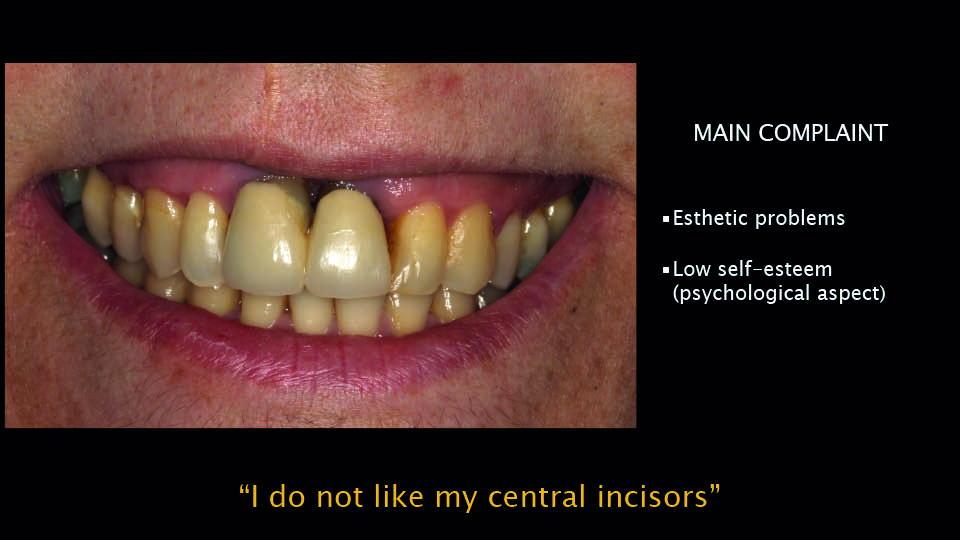
Fig 1
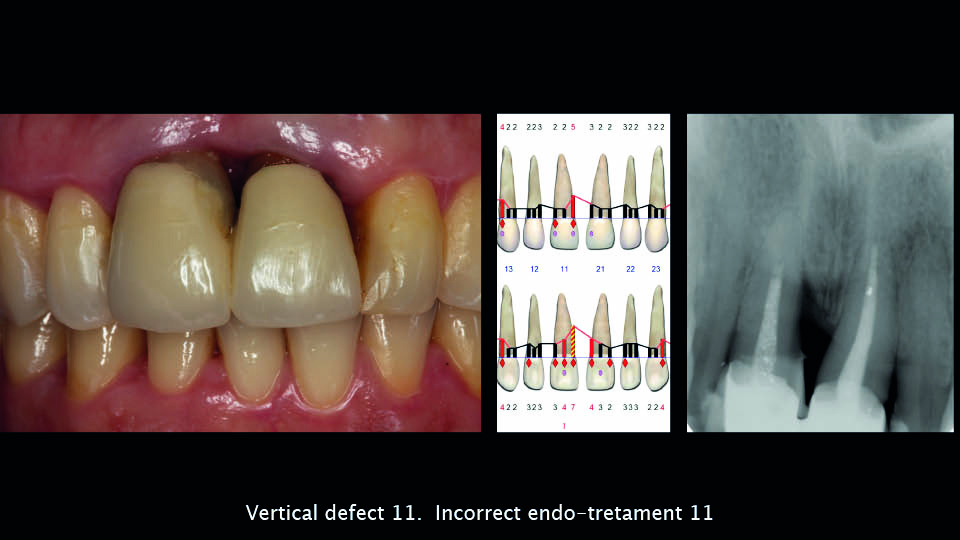
Fig 2
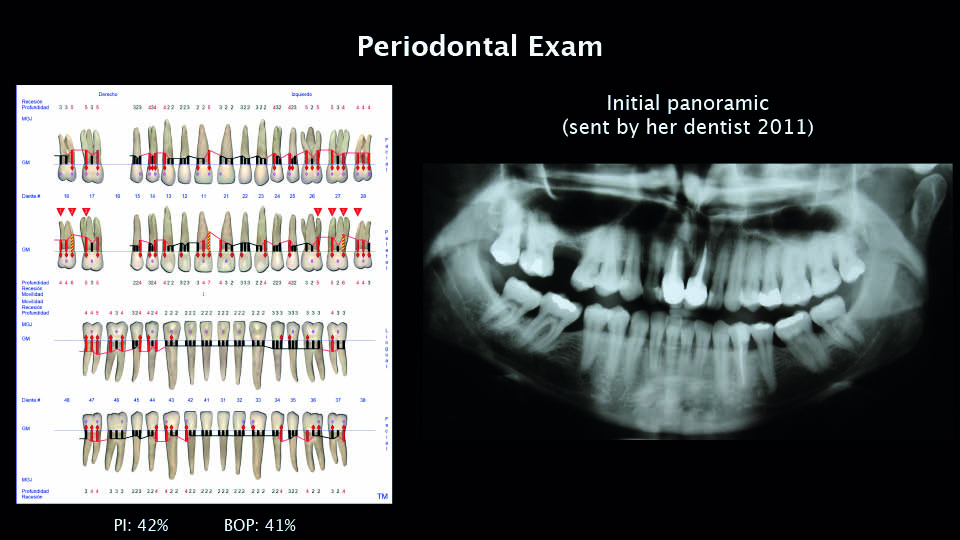
Fig 3
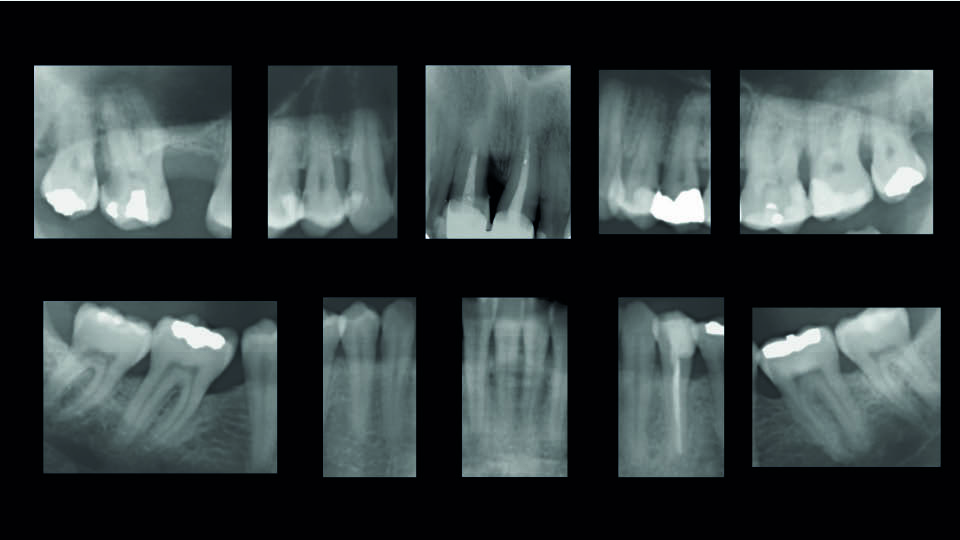
Fig 4
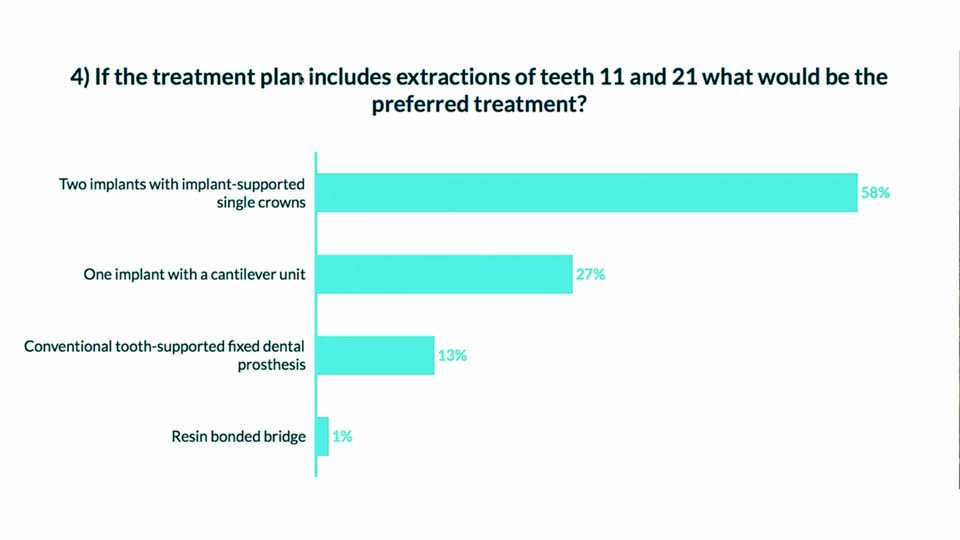
Fig 5: Audience answers
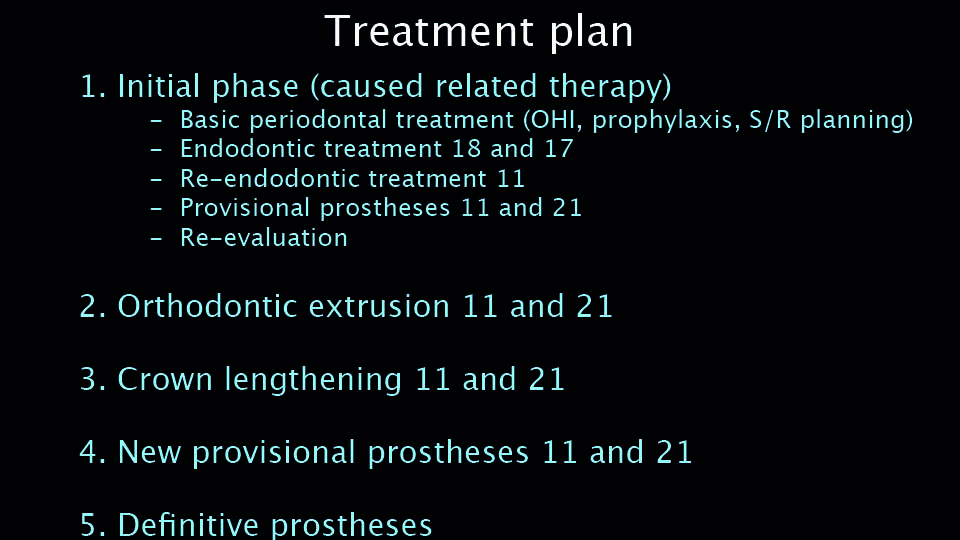
Fig 6
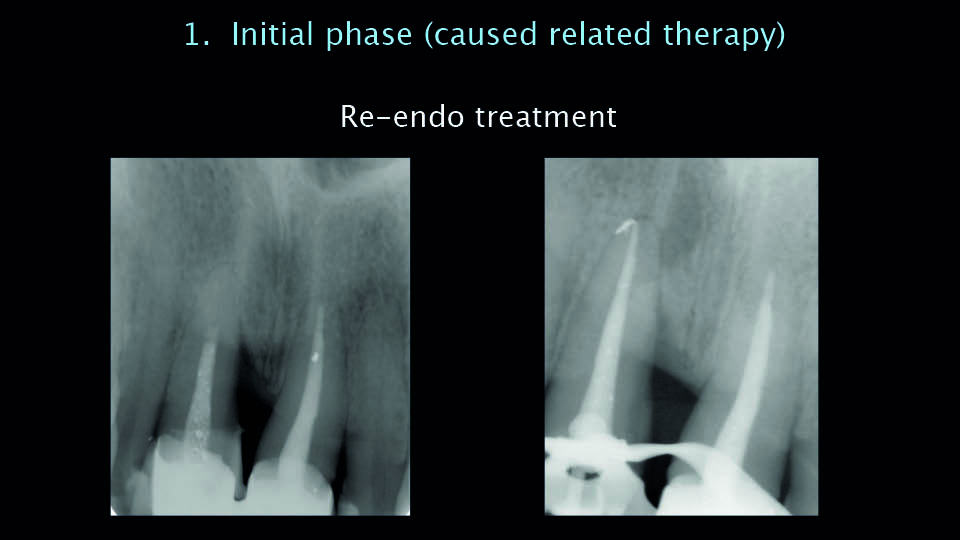
Fig 7
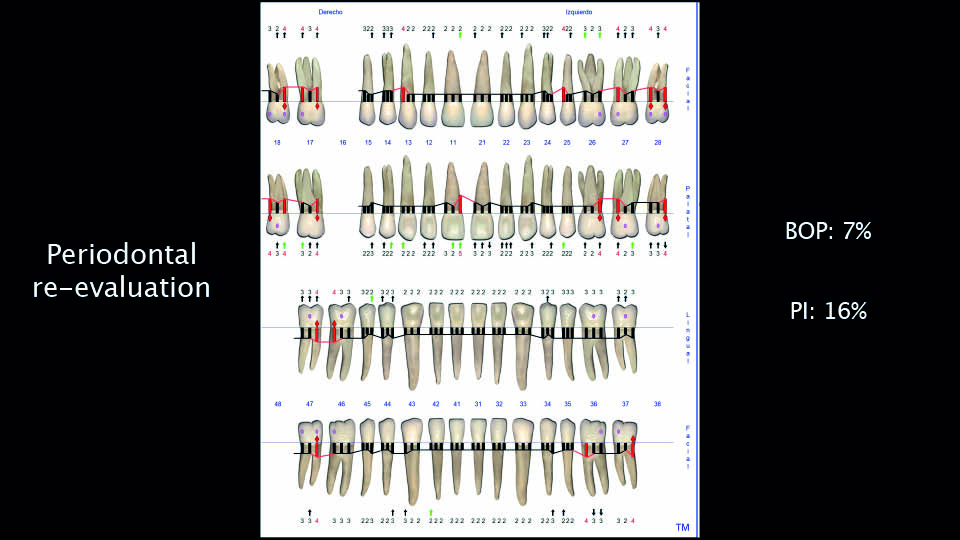
Fig 8
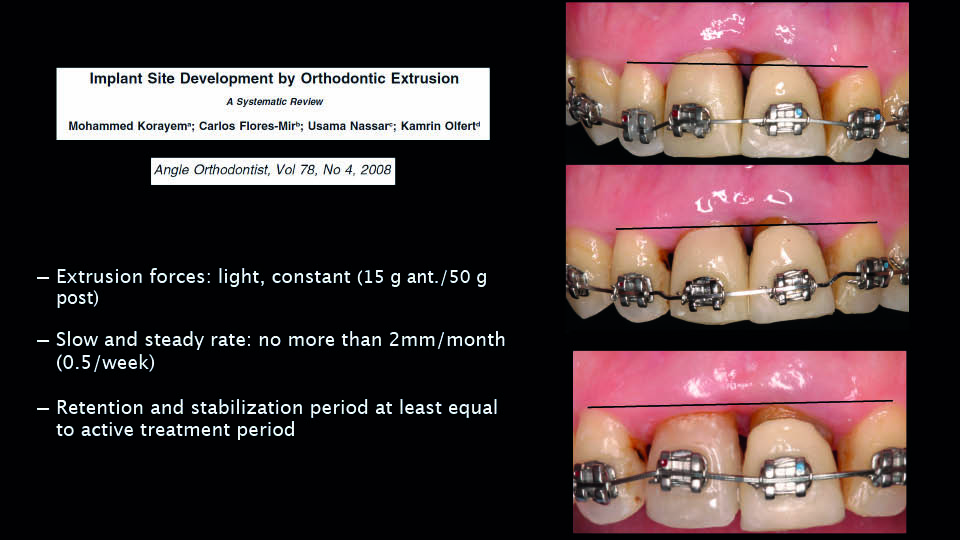
Fig 9

Fig 10
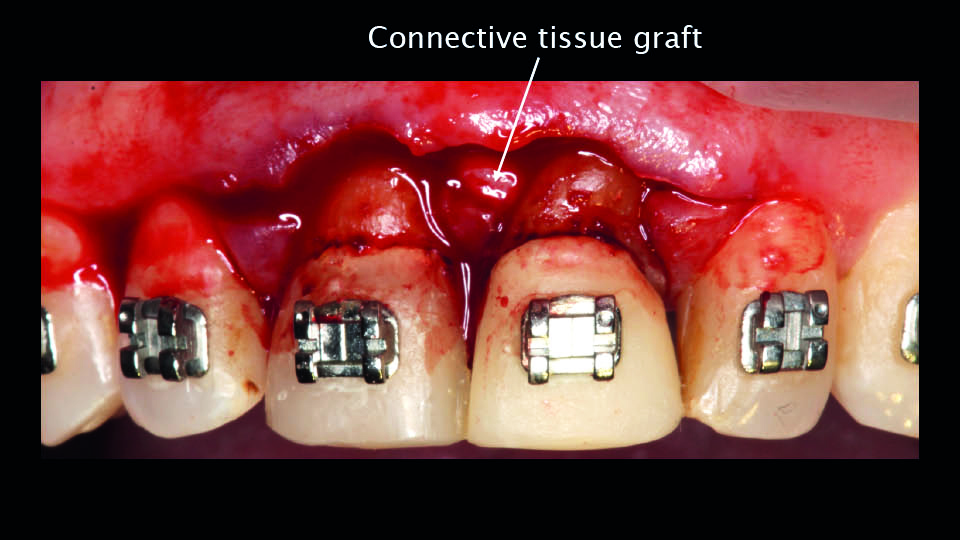
Fig 11
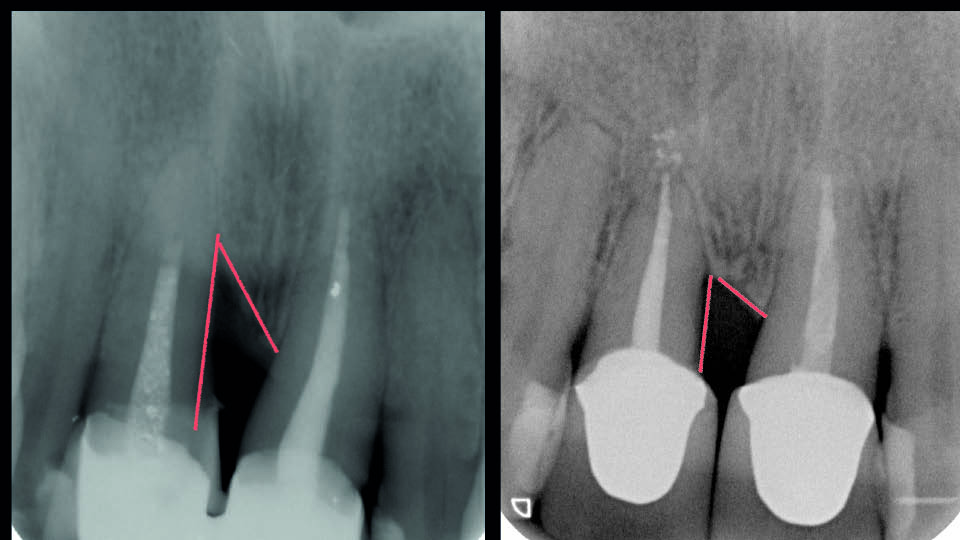
Fig 12
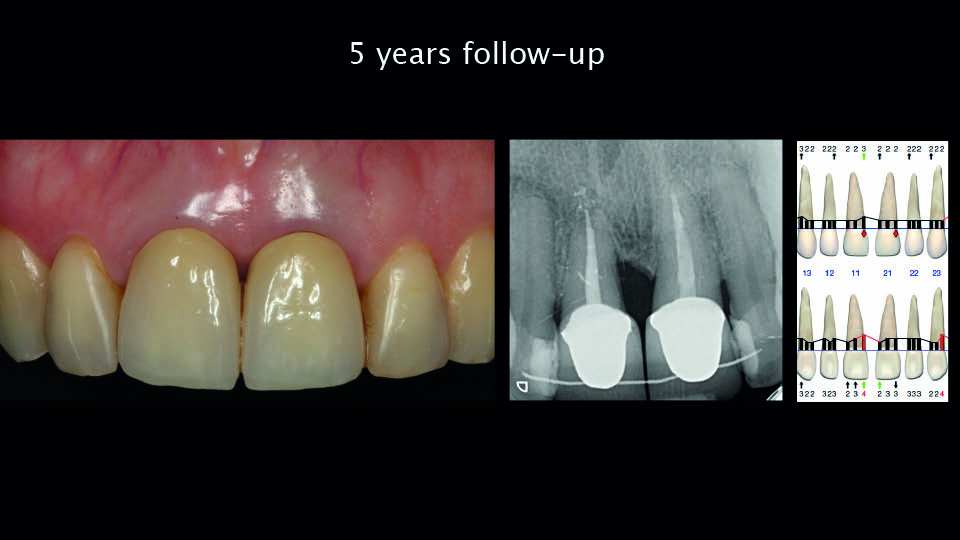
Fig 13
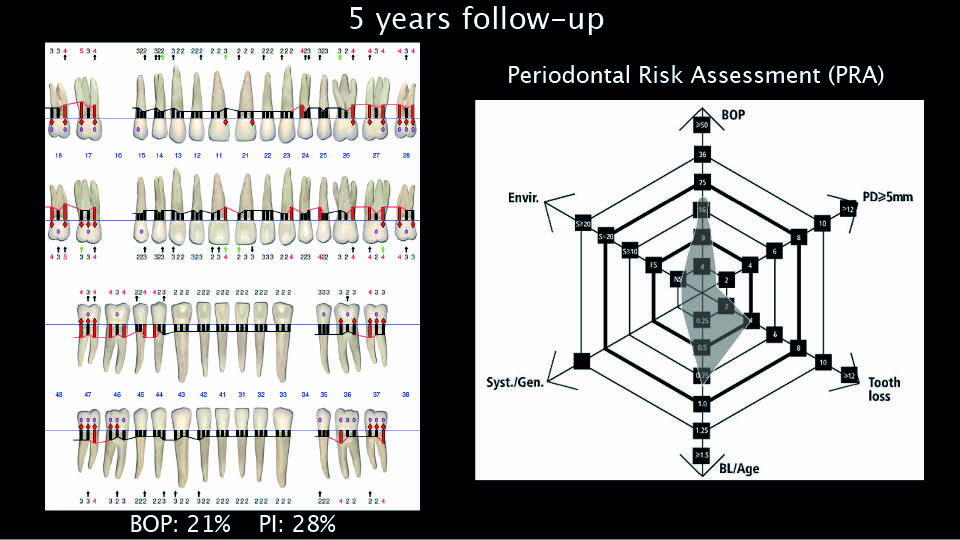
Fig 14
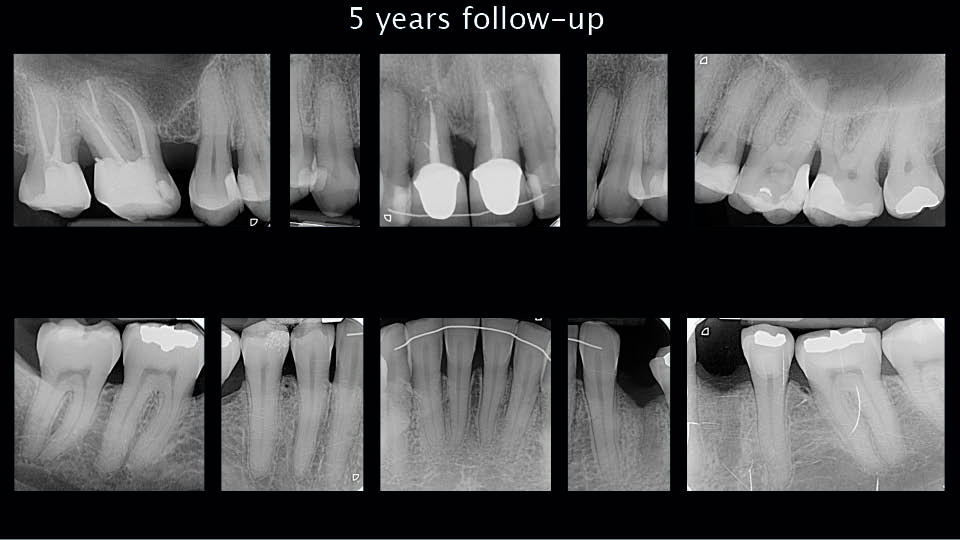
Fig 15

Fig 16
References:
Pjetursson BE, Helbling C, Weber HP, Matuliene G, Salvi GE, Brägger U, Schmidlin K, Zwahlen M, Lang NP. Peri-implantitis susceptibility as it relates to periodontal therapy and supportive care. Clin Oral Implant Res, 2012;23(7):888-94.



